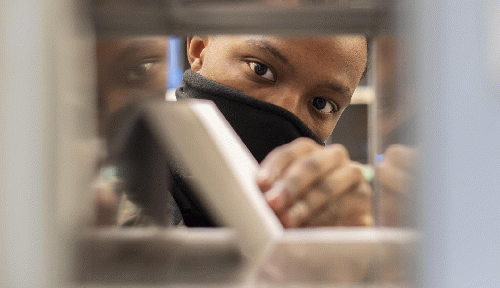From Smirking Chimp
After a poorly attended rally in Tulsa and falling support in opinion polls, President Trump has renewed his false attacks on mail-in voting.
But as states keep encouraging voting from home in response to the pandemic and 2020's primaries and runoffs continue, a recurring election administration problem may be playing into Trump's myths about Democrats voting more than once.
In many states resuming statewide elections, blocs of voters who applied to vote from home are not receiving their absentee ballot, or are receiving it too late to give voters confidence that they can return it by mail in time to be counted. So many of these voters have raced to fewer Election Day sites to cast a ballot.
"A ton of voters haven't received their absentee ballots after submitting their request," said Irene Shin, executive director of Virginia Civic Engagement Table.
But voters aren't the only ones who are confused by voting in a pandemic. Many poll workers also don't know what to do when mail-in ballot voters show up.
"Poll workers are pretty woefully underprepared with information or guidance for voters who are coming up with questions about absentee ballots or absentee ballot requests," Shin said at the committee's briefing. Voters were "being given false information by poll workers who are unfamiliar with absentee ballot protocols because they have not had this level of voters with these kinds of issues before."
In some states, voters who applied for a mail-in ballot can have that ballot quickly canceled at a polling place and then can proceed to vote with a regular ballot. In other states, they must fill out additional paperwork before voting with a regular ballot, or are directed to vote with a provisional ballot (these ballots and their paperwork must be vetted later and are among the last to be counted).
This range of protocols, which are not widely known in states that have not predominantly voted by mail before the pandemic, already has been targeted by GOP disinformation. After the first pandemic primaries in April, right-wingers attacked unreturned mail-in ballots as "missing," which fact-checkers debunked. On June 22, following widespread media coverage of TikTok users who foiled Trump's campaign by registering for the Tulsa rally without any intention of attending, Trump retweeted, "If Democrats are prepared to lie and cheat to fraudulently shut down political rallies, they should NEVER be trusted with mail-in ballots!"
These two related trends, voters not receiving mail-in ballots and poll workers not knowing what to do when they show up to vote, could become a problem this fall, especially if the president and his supporters continue to conflate administrative snafus, voters seeking to cast ballots that count, and imagined voter fraud.
Bottlenecks Emerge
While many state officials have noted that their primary turnout has increased due to absentee voting and touted that increased turnout as an achievement, there is a recurring pattern of blocs of voters expecting mail-in ballots who did not get them or received them very late, prompting fears that their votes would be lost.
"There are definitely more ballots that didn't make it into the mail [to voters] than we would like to see," said Susan Lerner, executive director of Common Cause New York, on the Lawyers' Committee call. "We would like to see complete fulfillment of all of the requests. I believed that the city [of New York] had, as of the weekend [June 20-21], fulfilled over 95 percent of the requests that it received for absentee ballots."
A similar pattern was seen in Kentucky, said Cassia Herron, Kentuckians for the Commonwealth executive committee chair. She said the cause of gaps in absentee ballot fulfillment was increased voter interest in 2020's primary compared to 2016, coupled with under-resourced and under-staffed county election offices.
(Note: You can view every article as one long page if you sign up as an Advocate Member, or higher).






